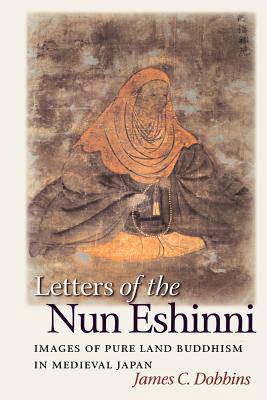
- Retrait gratuit dans votre magasin Club
- 7.000.000 titres dans notre catalogue
- Payer en toute sécurité
- Toujours un magasin près de chez vous
- Retrait gratuit dans votre magasin Club
- 7.000.0000 titres dans notre catalogue
- Payer en toute sécurité
- Toujours un magasin près de chez vous
Letters of the Nun Eshinni
Images of Pure Land Buddhism in Medieval Japan
James C DobbinsDescription
Eshinni (1182-1268?), a Buddhist nun and the wife of Shinran (1173-1262), the celebrated founder of the True Pure Land, or Shin, school of Buddhism, was largely unknown until the discovery of a collection of her letters in 1921. In this study, James C. Dobbins, a leading scholar of Pure Land Buddhism, has made creative use of these letters to shed new light on life and religion in medieval Japan. He provides a complete translation of the letters and an explication of them that reveals the character and flavor of early Shin Buddhism. Readers will come away with a new perspective on Pure Land scholarship and a vivid image of Eshinni and the world in which she lived.
After situating the ideas and practices of Pure Land Buddhism in the context of the actual living conditions of thirteenth-century Japan, Dobbins examines the portrayal of women in Pure Land Buddhism, the great range of lifestyles found among medieval women and nuns, and how they constructed a meaningful religious life amid negative stereotypes. He goes on to analyze aspects of medieval religion that have been omitted in our modern-day account of Pure Land and tries to reconstruct the religious assumptions of Eshinni and Shinran in their own day. A prevailing theme that runs throughout the book is the need to look beyond idealized images of Buddhism found in doctrine to discover the religion as it was lived and practiced. Scholars and students of Buddhism, Japanese history, women's studies, and religious studies will find much in this engaging work that is thought-provoking and insightful.Spécifications
Parties prenantes
- Auteur(s) :
- Editeur:
Contenu
- Nombre de pages :
- 280
- Langue:
- Anglais
Caractéristiques
- EAN:
- 9780824828707
- Date de parution :
- 30-09-04
- Format:
- Livre broché
- Format numérique:
- Trade paperback (VS)
- Dimensions :
- 152 mm x 227 mm
- Poids :
- 449 g

Les avis
Nous publions uniquement les avis qui respectent les conditions requises. Consultez nos conditions pour les avis.






